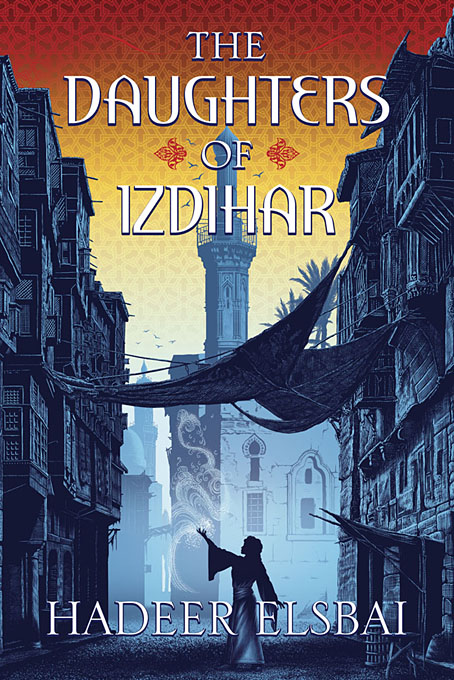Another new cover of mine, this one suits the weather which today in Britain is giving us temperatures more usually found in regions further south:
From debut author Hadeer Elsbai comes the first book in an incredibly powerful new duology, set wholly in a new world, but inspired by modern Egyptian history, about two young women—Nehal, a spoiled aristocrat used to getting what she wants and Giorgina, a poor bookshop worker used to having nothing—who find they have far more in common, particularly in their struggle for the rights of women and their ability to fight for it with forbidden elemental magic.
As a waterweaver, Nehal can move and shape any water to her will, but she’s limited by her lack of formal education. She desires nothing more than to attend the newly opened Weaving Academy, take complete control of her powers, and pursue a glorious future on the battlefield with the first all-female military regiment. But her family cannot afford to let her go—crushed under her father’s gambling debt, Nehal is forcibly married into a wealthy merchant family. Her new spouse, Nico, is indifferent and distant and in love with another woman, a bookseller named Giorgina…. (more)
The design bears a superficial resemblance to the one I created for The Ingenious by Darius Hinks, one of the requests from the art director being for a similar view down a street and the sky filled with an interlaced pattern. The new artwork isn’t as fantastic, however, since the city of Almaxar in Hadeer’s novel is based on old Cairo. This was very convenient for the research process, Cairo was a popular destination for western travellers in the 19th century so there are many sketches and engravings of its narrow lanes. My street is an amalgam of several different views, with an emphasis on those mashrabiya windows which are designed to help cool buildings. (On a side note, the subject of ventilation and passive cooling in Middle-Eastern architecture is a fascinating one, as this page about windcatchers demonstrates.)
The knotwork pattern was the third design I tried after the first two turned out to be too obtrusive for the background. Both this one and the pattern used for The Ingenious were taken from templates in Les Éléments de l’Art Arabe – Le Trait des Entrelacs (1879) by Jules Bourgoin, a book which shows how to create these interlacings from scratch. I always prefer to do this when possible, rather than using stock imagery; the creation of the pattern doesn’t take too long once you’ve worked out the portion that will be repeated.
The Daughters of Izdihar will be published early next year by Harper Voyager (US) and Orbit Books (UK).
Previously on { feuilleton }
• The Ingenious by Darius Hinks

